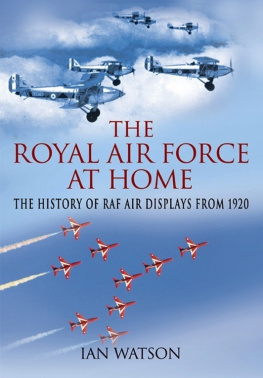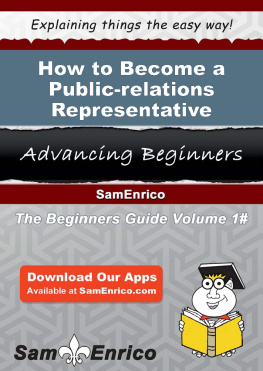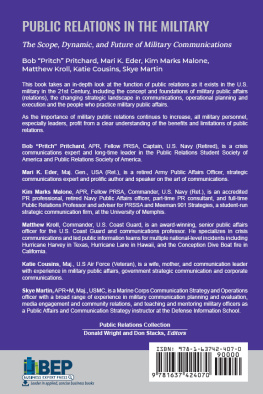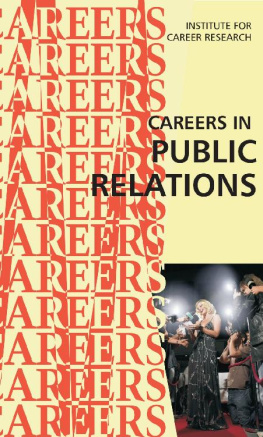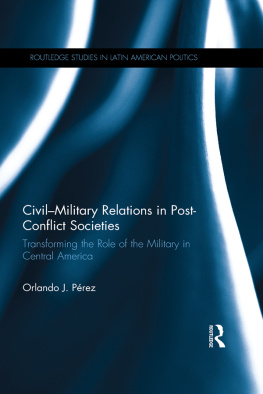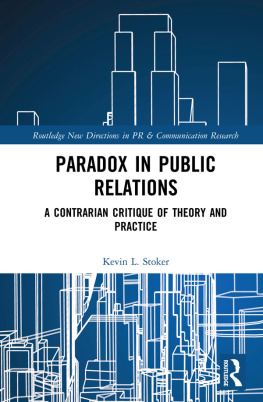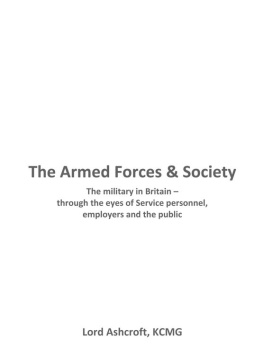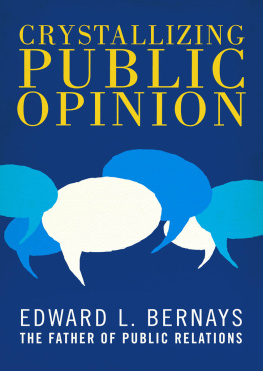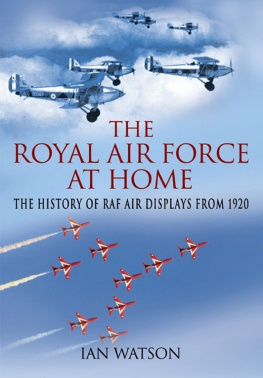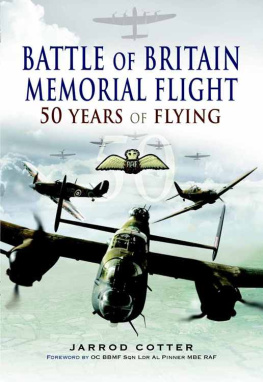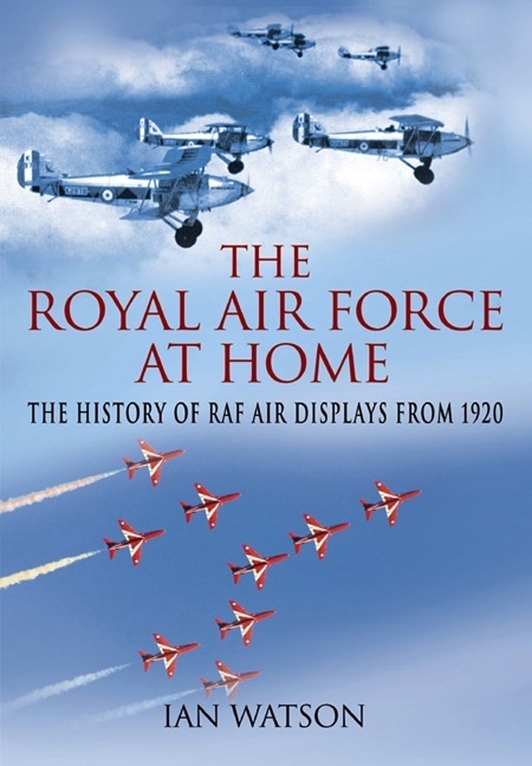Acknowledgements
In writing this book Ive set out to present a historical view of the Royal Air Force from a different angle than that which is more usual. Not that the subject of the RAFs commitment and policy to air shows and public displays generally has not been touched upon before, but when so, it has usually been an occasional reference, indeed, an acknowledgement along the way.
This time I trust Ive struck a cord with those who enjoy what has come to be described as the UKs second-largest spectator sport. To those who can remember perhaps attending one of the once many RAF stations, for many now quite some years ago, perhaps on the occasion of the annual Battle of Britain displays which figure so prominently in this book, then you may find some sense of nostalgia herein.
As I write this passage to thank those who have contributed so much, whether photographs, specific details or transcriptions from Air Council meetings minutes, a sense that an end of an era is upon us has never been more keenly felt than now; as descendants of the few become fewer, so does the contribution to the annual list of air shows which in themselves now are predominantly civilian-organised, a reverse state of affairs from the early post-war years.
Before I digress any further then, Ill get to the point and say thank you to the following: John Wharam, John Fisher, Peter March, Alex Christie, Steve Williams, Robin Williams, Mick Jennings and Keith Butcher, all of whom provided a generous selection from which many of the pictures were drawn and are individually acknowledged. Other photographs from more formal sources have been provided by The Air Historical Branch; in particular Im indebted to Squadron Leader Peter Singleton and Bill Hunt, who were particularly helpful in researching photographs. Other sources who have contributed are Warwickshire County Records Office, who provided some rare shots taken at Gaydon in the sixties and Im especially grateful to the Royal Netherlands Air Force Historical Branch for their contribution. The National Archives have also proved an indispensable source not only for photographs but also for allowing transcriptions of Air Council minutes concerning early policy regarding the staging of service-organised air shows, for which I would like to say thank you in particular to Tim Padstow and Paul Johnson of the National Archives crown copyright department. The detailed participation lists and timetables of previous Battle of Britain At Home Days, which make up the extensive appendices, appear also in no small part thanks to the National Archive, John Halley of Air Britain Historians, Midland Counties Publications, Merv Hambling of the Norfolk Aviation Society and the Royal Air Force Museum archive office at Hendon, all of whom have also proved most helpful here. Furthermore, I must thank the publishers of Aeroplane Monthly and Aviation News for their kind assistance with the reviews and quotes from 1920-21 editions of The Aeroplane and September 1963 edition of Air Pictorial ,which helped research regarding the Hendon Air Pageants and organisation of the Battle of Britain Displays. Furthermore, thanks to Group Captain Nicky Loveday and Squadron Leader Roger Steele, who have given crucial advice regarding the training of display crews. Finally, Im honoured to have received the assistance of Tim Prince, Director of RIAT and Air Vice Marshal Peter Latham, who as Leader of the Black Arrows set the standards of formation aerobatics which we see today in The Red Arrows and other premier military display teams.
There are others, Im sure, that I have forgotten to mention. I can only apologise to those who contributed in some way but are not listed here. However, their efforts are deeply appreciated just the same.
Appendices
The following is a detailed historical reference of the level of resources deployed by the RAF and other contributing military air arms and civilian organisations to the annual Battle of Britain displays. To provide such a detailed list of all such events since 1945 would take as many years to collate as volumes to present, so I have concentrated on eight significant occasions over the 38 years from the 25th anniversary of the battle in 1965 through to the 63rd and the 100th anniversary of flight in 2003. I have picked on this period frankly for the ease of research but also because it represents a period over which the RAF was subject to change. By the end of this period, indeed, the service had been reduced quite substantially. During the first five years, the three operational commands were condensed into Strike Command and the F111 purchase was cancelled. During the five years following, the RAF lost most of its overseas assets, including the bases at El Adem, Tengah, Ghan and the return of front-line assets from Akrotiri in Cyprus. Then in 1975, Air Support Command lost the bulk of its strength with what remained being absorbed into Strike Command. The six years chosen from this period have been so because in some way or another they can be regarded as a milestone to some degree in so far as they mark either a significant anniversary or some unique appearance on the air show circuit or something appearing for the first or last time. Another point perhaps worth noting in these appendices is the rate of decline, over a relatively short period, in the level of assets made available for participation in these annual displays, which was probably faster than the reduction of the displays themselves.
Where possible, I have endeavoured to be meticulous and comprehensive. However, as information regarding some timings and participants has not become available, some details in the following listings concerning static displays are not complete in every case. The listed flying displays are complete as originally planned unless stated otherwise. Despite the scarcity of some information, I have been able to put together what I trust is a comprehensive enough source of information to provide an interesting and historical reference guide to the RAFs display commitment, organisation and effort on these occasions. One further note on these appendices; if a registration number does not appear against a flying participant, this does not mean that aircraft failed to show; indeed, where flight plan numbers are used I have for the most part avoided repeating the registration if its corresponding flight plan number appears on a another flying programme. Aircraft for which there is no registration at all are still more likely than not to have appeared as billed, even taking into consideration the likelihood of non-appearances. One final point: of several touring formations of Hunters provided for the 1965 At Home Day, most defied identification, but are believed to have ben taken part just the same.
Appendix 1
The displays held on 18th September 1965, significantly that year, introduced the Red Arrows aerobatics team, which displayed at Biggin Hill and Tern Hill. Biggin Hill clearly still enjoyed its status as the main event which made it, in flying display terms, the UKs overall leading military air show of the time. It was planned that the USAF would, that year, provide what should have been the first flying appearance, at UK events, of the F4 Phantom II. However, anticipation of poor weather on the day convinced the Americans to cancel their contribution. As it materialised, weather conditions were generally good and, it being a significant anniversary year, the RAF made the effort to ensure as comprehensive a representation as possible was allocated to each of the 12 stations selected to open their gates to the public that day. Particularly prevalent that year were the number of Lightnings participating, and unlike the V-bomber units which had been ordered to remove noticeable squadron markings in conjunction with the arrival of low-level camouflage the previous year, the Lightning units, still in natural metal finish, adorned their aircraft in 1965 with vibrant glossy paint schemes. No. 23s white fins bore red eagles, 74s black fins carried tiger heads, 92 carried red-and-yellow chevrons and blue fins, and 111 had black-and-yellow lightning flashes, while 56 carried red-and-white chequers on the fin. Even the OCU regarding their reserve squadron number 145 werent left out, with red-and-white fins and spines carrying the squadron St George cross with sword imposed. All bar one unit provided aircraft this day and the unit which missed out, 56 Squadron, did offer a four-strong formation but were turned down for a mix of reasons, including a lack of any stations at home which were looking for Lightnings within sufficient range to allow flying from the the home base, Wattisham. Also, as the squadron had just returned from an overseas deployment a further, if smaller, deployment in a couple of days seemed rather too much to ask. Furthermore, the squadron had already been tasked with providing a formation flypast over London on the following Sunday.

